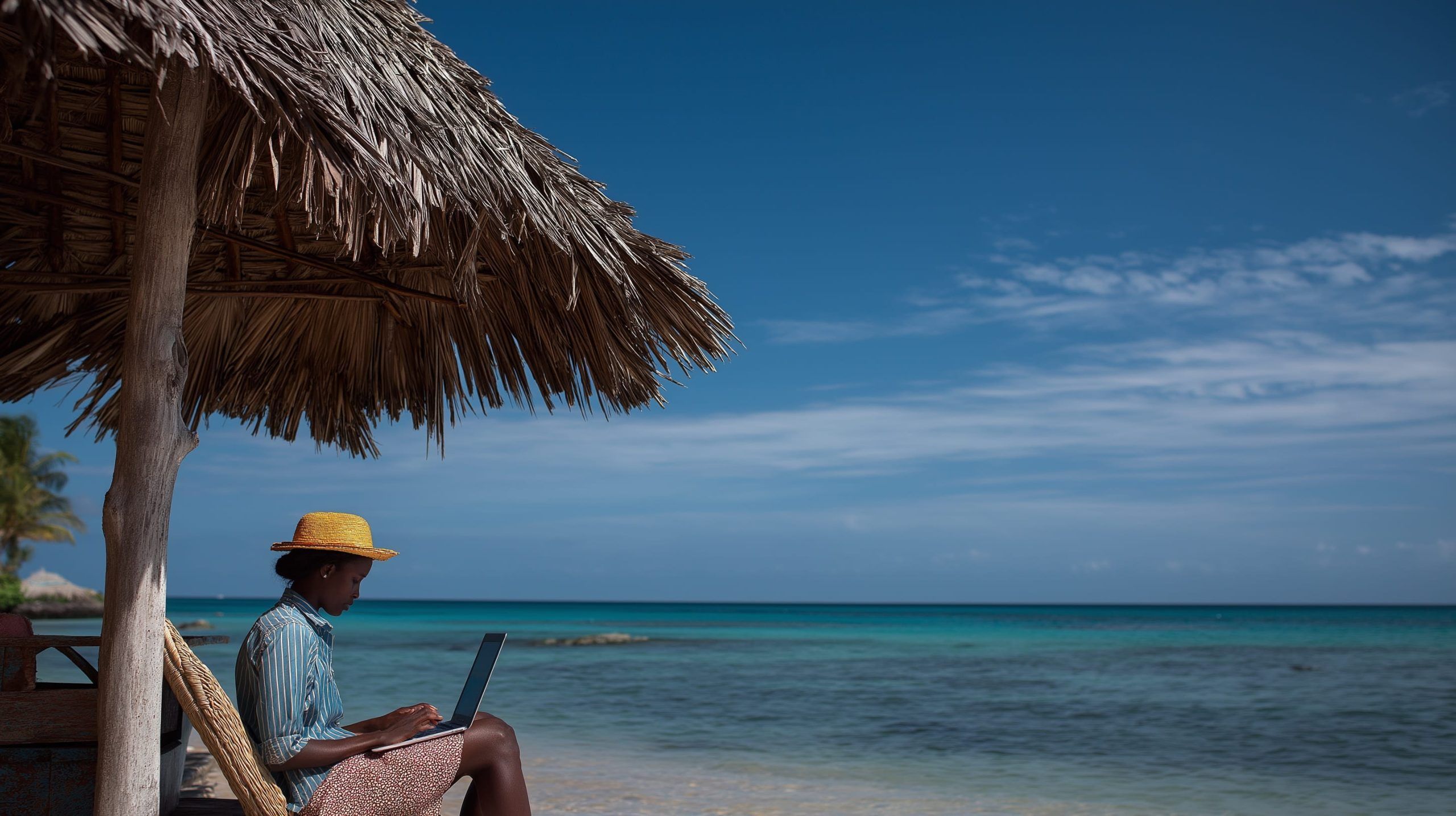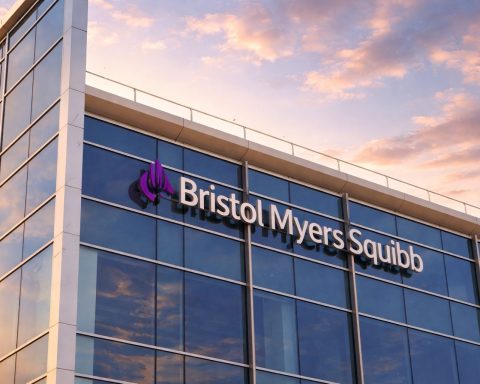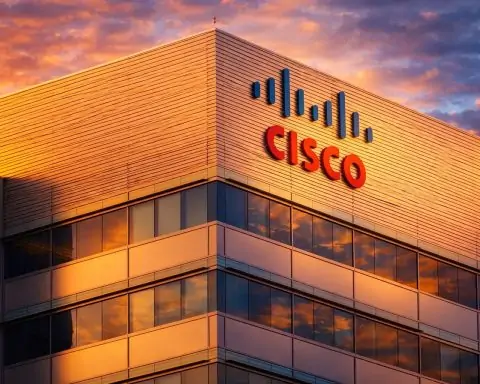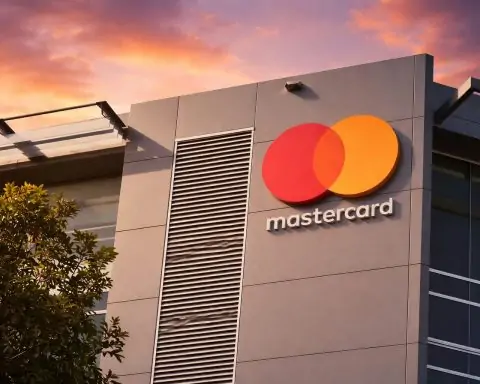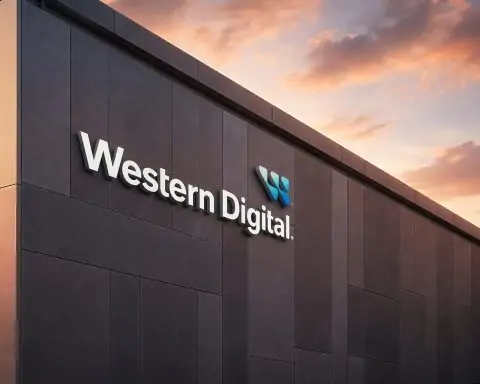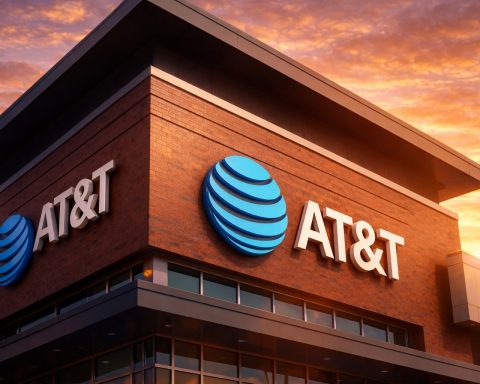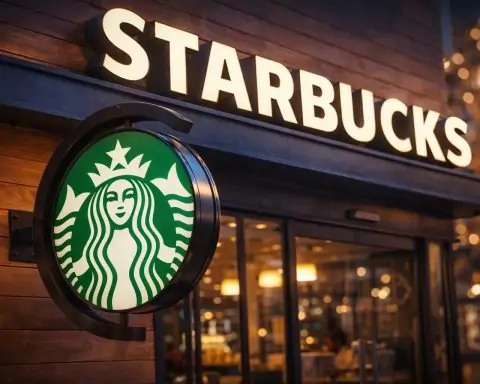- Jamaica’s internet penetration is about 83–85%, with 2.37 million internet users in January 2025, representing 83.4% of the population online.
- Rural areas show roughly 77% internet usage compared with about 87% in urban centers, highlighting an urban–rural digital divide.
- Median mobile data speed is about 29–30 Mbps, while median fixed broadband speed is around 60–80 Mbps, with fixed speeds rising from ~61 Mbps in January 2024 to ~82 Mbps in January 2025 and mobile speeds down about 3.5% in 2023.
- By 2023, 99% of Jamaicans had access to at least a 4G mobile signal, while 5G networks were essentially non-existent (<1% coverage).
- Fixed broadband subscriptions totaled about 448,000 in 2023, or roughly 16 per 100 people.
- Flow and Digicel together account for about 95% of Jamaica’s internet users, with Flow leading fixed broadband and pursuing a nationwide 100% fiber network by 2025.
- Digicel has hundreds of mobile sites and Flow reports 97.5% population coverage for its mobile signal, while public 5G has not launched as of early 2025.
- Starlink entered Jamaica in 2022–2023 and by 2025 owned about 2% of internet users, with dish prices around JMD 42,000 and monthly fees near JMD 8,450.
- The Universal Service Fund has funded 189 Community Wi‑Fi hotspots from 2021 to 2023 and, by mid-2025, more than 380 hotspots were in operation, alongside programs to connect schools and libraries.
- Looking ahead, Jamaica envisions pilots of 5G in urban areas, the arrival of Rock Mobile as a third operator, near-universal fiber from Flow by 2025, and participation in the World Bank’s 50 in 5 Digital Public Infrastructure program and a National Digital ID effort.
Jamaica has made significant strides in internet connectivity, achieving an internet penetration rate of roughly 83–85% in recent years [1] [2]. As of early 2024, about 2.4 million Jamaicans were internet users (out of a 2.83 million population) [3]. By January 2025 the number of users stood at 2.37 million, representing 83.4% of the population online [4]. This leaves around 15–17% of Jamaicans offline, primarily in older, rural, or low-income demographics [5] [6]. Notably, internet uptake is somewhat lower in rural areas (about 77% usage) compared to urban centers (around 87%) [7], reflecting a persistent urban-rural digital divide.
In terms of connection quality, Jamaica’s internet speeds have improved but still vary between mobile and fixed networks. The median mobile data download speed is about 29–30 Mbps, while the median fixed broadband speed is substantially higher (around 60–80 Mbps as of 2024–2025) [8] [9]. Ookla data indicate fixed broadband speeds jumped by +24–35% year-on-year, reaching a median ~61 Mbps in Jan 2024 and ~82 Mbps by Jan 2025 [10] [11]. Mobile speeds have been relatively stagnant, even seeing a slight decline (~3.5% drop in 2023) to a median ~30 Mbps [12]. These averages reflect ongoing infrastructure upgrades: Jamaica’s legacy ADSL and 3G networks are gradually giving way to fiber-optic broadband and 4G LTE, which offer higher capacity. By 2023, 99% of Jamaicans had access to at least a 4G mobile signal, whereas 5G networks were essentially non-existent (<1% coverage) at that time [13]. Fixed broadband subscriptions are growing but still limited relative to the population – about 448,000 fixed subscriptions in 2023 (around 16 per 100 people) [14] [15]. The vast majority of internet users rely on mobile data connectivity, evidenced by over 3 million cellular connections in use (exceeding the population) [16] [17]. In other words, Jamaica’s internet ecosystem is characterized by widespread mobile internet usage, alongside a concerted push to expand high-speed fixed (fiber) broadband access.
Major ISPs and Available Services
Jamaica’s internet service market is dominated by two providers: Flow and Digicel. Together, these two companies account for about 95% of the country’s internet users [18]. Flow (the consumer brand of Cable & Wireless Jamaica, now part of Liberty Latin America) is the largest broadband provider, while Digicel (a regional telecom group) is the leading mobile operator. Both offer a range of services:
- Flow Jamaica: Historically the incumbent fixed-line operator, Flow provides home internet via legacy DSL/copper lines, cable broadband, and increasingly fiber-optic connections. In recent years Flow has undertaken a massive fiber-to-the-home (FTTH) upgrade, aiming to replace its copper network entirely with fiber for faster speeds and reliability [19]. As of 2025, Flow was in the final phase of becoming a “100% fiber” network nationwide [20]. This transition improves speeds (multimegabit to gigabit capabilities) and reduces outages caused by issues like copper theft and power consumption [21]. Flow also operates one of the two mobile networks in Jamaica, offering 2G/3G/4G voice and data services to about 97.5% of the population [22]. While Flow has not yet launched 5G in Jamaica, it has been upgrading its mobile infrastructure (recently acquiring 600 MHz spectrum) to enhance coverage in underserved areas and is technically prepping for future 5G deployment [23] [24]. Flow’s consumer offerings include stand-alone broadband plans (now mostly over fiber) and bundled packages that combine home internet, mobile service, and TV. For instance, Flow’s bundles in 2023 offered 250 Mbps home internet plus mobile service for around JMD 5,000–7,000 (~US$32–45) per month [25].
- Digicel Jamaica: Originally a mobile-only operator, Digicel has expanded into the home broadband market in the past decade. It runs the other nationwide mobile network, with a ubiquitous 4G LTE network and was an early mover in 5G trials (Digicel claims to have introduced limited 5G service, though full commercial 5G rollout remains very limited) [26]. On the fixed side, Digicel offers “Digicel+” fiber broadband in select areas (primarily urban centers) and a fixed-wireless LTE home broadband service for areas without fiber. This fixed-wireless solution uses Digicel’s mobile network (TDD-LTE technology) to deliver internet via a rooftop antenna or modem in the home [27]. Digicel’s home internet plans are often bundled with TV or mobile and have competitive pricing – e.g. around JMD 6,500 (~US$42) per month for broadband (after a discounted installation fee) [28]. Digicel’s market share in fixed broadband has grown, but Flow still leads in that segment; combined, however, Digicel and Flow serve nearly all internet subscribers in Jamaica. The intense rivalry between them has led to periodic price promotions and network investments. For example, in 2023 as Starlink entered the market, Digicel slashed installation fees by up to 75% for its fiber and wireless plans to attract new customers [29]. Digicel also provides enterprise telecom solutions (through C&W Business, which is actually Flow’s sister brand, and Digicel Business for its own services) and has innovated with services like the “Yaad and Road” package (a convergence of home and mobile services on one bill) [30]. Overall, Digicel is positioned as a mobile-first provider with a growing footprint in residential broadband.
- Other ISPs: Aside from the big two, Jamaica has a few smaller ISPs and niche service providers, though their combined market share is only around 5%. One newcomer to watch is Rock Mobile, which was awarded Jamaica’s third mobile operator license. After some delays since the license in 2021, Rock Mobile is expected to launch services in 2025, which the government hopes will increase competition in the mobile data market [31] [32]. There are also a handful of local operators providing fixed-wireless or cable broadband in select areas (for example, small cable companies or wireless ISPs serving certain parishes). These smaller providers cater to local demand but lack nationwide reach. An emerging player in the market is Starlink (covered in detail below), which uses satellites rather than terrestrial networks. Figure 1 summarizes the Jamaican internet market landscape – Flow and Digicel’s dominance, typical internet speeds, and the relative cost of service in Jamaica.
Mobile Data and Rural Connectivity
Mobile broadband is the linchpin of internet access across Jamaica, especially in rural and underserved communities. With rugged interior highlands and many sparsely populated areas, extending wired infrastructure to every community is challenging. Mobile networks have effectively filled this gap: thanks to aggressive network rollouts by Digicel and Flow over the past two decades, virtually the entire population (≈99%) lives under 4G mobile coverage [33]. This means even in remote districts, residents with a smartphone or 4G modem can get online, assuming they can afford a data plan and have electricity to charge devices. The role of 4G LTE has been transformative – it allows acceptable speeds for web browsing, social media, and even video streaming in areas that never had a wired internet option. Both major carriers have built extensive cell tower networks; Digicel, for example, has hundreds of sites blanketing the island, and Flow reports 97.5% population coverage with its mobile signal [34]. In recent initiatives, the carriers are also hardening and extending their networks in rural Jamaica. Digicel announced plans in 2024 to equip 40% of its ~900 cell sites with solar power and battery backups to keep them online during grid outages (a common issue in rural areas) [35]. Flow similarly has begun deploying solar at its towers (about 200 sites so far) [36]. These steps improve reliability for rural users who often face power cuts or storms that can knock out connectivity.
While 4G is ubiquitous, 5G in rural Jamaica is still on the horizon. Neither Flow nor Digicel had launched public 5G service as of early 2025 [37]. Flow has explicitly stated that it is preparing for 5G but is cautious about timing, given the high cost of 5G smartphones and the need for many more cell sites for dense coverage [38] [39]. In rural areas, 5G deployment may not be cost-effective until device prices drop and there’s proven demand for ultra-high speeds. In the meantime, the focus remains on maximizing 4G coverage and capacity. The government has also incentivized rural coverage through spectrum licenses – for instance, the new 600 MHz spectrum that Flow is acquiring comes with obligations to extend service to previously unserved communities using that low-frequency band (which is ideal for wide-area rural coverage) [40] [41]. Similarly, when Jamaica tendered a 700 MHz band license for a third operator, it required the winner to invest at least US$15 million in 4G infrastructure, specifically to improve rural broadband access [42] [43]. These regulatory moves underscore the priority on reaching the last pockets of offline population.
Beyond mobile network coverage, the bottleneck in rural connectivity is often affordability and quality. Many remote communities have coverage but weaker signal or congested networks, resulting in slower mobile data speeds. Mountainous terrain can cause coverage gaps; residents sometimes climb hills or roofs to catch a better signal. To mitigate this, Digicel and Flow have been adding new towers and upgrading sites from 3G to 4G. By 2023, essentially 100% of all mobile subscriptions were “broadband” (3G/4G) connections, meaning even in rural parishes most users are on at least 3G now [44]. For truly isolated villages with no telecom towers nearby, satellite internet (discussed later) is emerging as a solution. The Jamaican government is keenly aware of the rural gap: it has partnered with both private operators and international programs to connect facilities like rural schools, libraries, and post offices via wireless or satellite links. Overall, mobile data has been the workhorse driving Jamaica’s internet penetration into rural heartlands, helping bring online many communities that will likely never see a physical fiber cable in the near term. Continuing to boost the capacity and resilience of these mobile networks (through backup power, redundancy, and eventually 5G where sensible) is key to ensuring rural Jamaicans enjoy comparable internet experiences to their urban counterparts.
Internet Pricing, Accessibility, and Digital Inclusion
Despite the broad availability of internet service, affordability and digital inclusion remain pressing challenges in Jamaica. The cost of data plans and home internet relative to incomes is high by international standards. As of 2024, a “low-consumption” mobile broadband package (e.g. a basic monthly data plan) costs about 5.93% of average GNI per capita [45]. A fixed broadband subscription is even pricier, equivalent to roughly 7.7% of per-capita income (far above the <2% affordability benchmark often cited by the UN and ITU). In practical terms, a typical Jamaican household might pay around JMD 6,000–8,500 (US$40–55) per month for internet service [46] [47]. This is a significant expense in a country where the 2022 GDP per capita was about US$5,000 (which translates to roughly JMD 65,000 per month) – meaning internet service can consume a substantial chunk of monthly earnings for many families. The government and ISPs have acknowledged this burden: both Flow and Digicel have introduced discounted bundles and promotions to make internet more accessible. For example, Flow’s converged bundles (internet + mobile + TV) and Digicel’s installation fee cuts in 2023 effectively lowered the upfront or monthly costs for new subscribers [48] [49]. Even Starlink, upon entering the market, dropped its equipment price by ~40% (from JMD 70,000 to 42,000) and set its monthly fee at JMD 8,450 (~US$55) to attract Jamaican customers [50]. These price adjustments are a positive trend, but for many low-income or rural Jamaicans, even JMD 5,000 a month is prohibitive.
To tackle digital inclusion, Jamaica has been leveraging its Universal Service Fund (USF) and other initiatives to provide free or subsidized internet access points. One flagship program is the Community Wi-Fi Hotspot project, which has established free Wi-Fi in hundreds of locations nationwide. The government, through the USF, rolled out Wi-Fi in 189 communities (3 per parliamentary constituency) between 2021 and 2023, focusing on town centers, community centers, and other public areas in underserved districts [51] [52]. These free public Wi-Fi hotspots allow residents – especially students and job seekers – to get online without charge, helping bridge the gap for those who cannot afford personal service. By mid-2025, the USF reported over 380 community Wi-Fi hotspots in operation across Jamaica [53]. Additionally, the government has provided broadband access in schools and libraries to ensure youths can connect. Under the National Broadband Initiative, dozens of rural schools have been equipped with internet (via fiber, microwave, or now Starlink satellite) and many public libraries, post offices, and parish council offices have been connected as well [54]. These efforts target the remaining offline population – roughly 400–500,000 Jamaicans who are not internet users – by bringing connectivity into their communities and public institutions. Many of the offline are older adults or those in remote rural areas; for them, digital literacy and having relevant local-language content are also barriers. Programs by the Digicel Foundation and e-Learning Jamaica have distributed tablets, set up community ICT centers, and conducted digital skills training to encourage more people to get online, thereby fostering greater digital inclusion.
Affordability improvements are gradual, but the trend is moving in the right direction. Internet Society’s Pulse report highlights that Jamaica must improve on affordability and market competition to boost inclusion [55]. The entry of new players (Starlink, Rock Mobile) and continued government subsidies for public access are expected to put downward pressure on consumer prices. In the meantime, internet access is still a luxury for some – many Jamaicans carefully ration mobile data or rely on free Wi-Fi zones to access important online services. Bridging this divide will require sustained effort in price reduction, public access facilities, and user education so that the benefits of Jamaica’s digital revolution reach all citizens.
Current and Emerging Satellite Internet Developments
One of the most exciting frontiers for connectivity in Jamaica is satellite internet, led by SpaceX’s Starlink service. Often dubbed the “final frontier” of internet access, satellite networks can reach places ground infrastructure cannot – an attractive proposition for an island with rugged terrain and some hard-to-reach communities. In late 2022, Jamaica officially approved Starlink’s entry: the government granted SpaceX a telecom license to operate Starlink in Jamaica, welcoming it as a way to connect “even the areas that have never been connected” [56] [57]. By early 2023, Starlink went live and began serving customers across the island. Starlink’s approach is fundamentally different – it uses a constellation of low-Earth-orbit (LEO) satellites (well over 3,000 satellites in orbit) to beam internet data from space to a small dish installed at the user’s location. Because these satellites orbit much closer to Earth than traditional geostationary satellites, Starlink can provide high speeds (50–150 Mbps) and low latency (~20–40 ms), comparable to terrestrial broadband. This technology has quickly proven a game-changer for remote and rural connectivity in Jamaica. For example, mountainous districts in Portland or St. Elizabeth that suffered from spotty 3G signals can now get a solid internet link via Starlink, as long as they have a clear view of the sky.
Importantly, Starlink is augmenting resilience and emergency connectivity. Satellite links are largely immune to the common disruptions that plague land networks – they aren’t affected when hurricanes knock down poles or when thieves steal copper cables. The Jamaican government noted that Starlink will help deliver online education and telehealth in remote areas, and provide backup communications during natural disasters [58]. In the words of Minister Daryl Vaz at the launch, “with satellite Internet, even the areas that have never been connected… have the opportunity to have access to high-speed Internet now”, calling Starlink “a move in the right direction” for Jamaica’s technological advancement [59]. The service has indeed found a niche: by 2025, Starlink already captured an estimated 2% of Jamaican internet users [60], which is significant given it’s a relatively new option. These early adopters include both individual rural households and organizations. One high-impact deployment is in education – the Ministry of Education has partnered with Starlink to connect rural schools. In 2024–2025, several remote technical high schools that lacked reliable internet received Starlink terminals, enabling campus-wide Wi-Fi for students and teachers [61] [62]. The goal is to outfit “the entire school campus in Jamaica” with Wi-Fi, and satellite tech is helping achieve that in areas where fiber or cable can’t reach easily [63].
While Starlink is the headline player, it’s worth noting other satellite developments too. Competing LEO constellations like OneWeb have also been looking at the Caribbean, though OneWeb’s focus is more on enterprise and government backhaul (often partnering with local telecoms to feed cell towers or community Wi-Fi). Additionally, some Jamaicans and businesses used legacy satellite internet (VSAT) services in the past (e.g. HughesNet or O3b) – but those were typically slow (high-latency) and expensive, limiting them to niche uses like remote resorts or as a last resort backup. Starlink’s arrival, by contrast, brings a more affordable and consumer-friendly satellite option. As mentioned, Starlink’s hardware price in Jamaica has dropped to about JMD 42,000 (~US$270) for the dish, and the monthly subscription ~JMD 8,450 (~US$55) [64] [65]. This is still costlier than a basic wired plan in Kingston, but for a rural family that previously had no connectivity at all, the price-performance can be justified. Moreover, Starlink has been known to adjust pricing regionally, so Jamaica could see further price cuts or new plans (e.g. a low-data “Lite” plan) as the service scales up.
Looking ahead, satellite internet is poised to reshape remote connectivity in Jamaica. We can expect to see more collaborative uses – for instance, the government could deploy Starlink or similar systems to strengthen disaster preparedness (ensuring shelters, clinics, and first responders in any part of the island have an independent communication line). There is also talk of using satellite links to feed public Wi-Fi hotspots in very rural villages, where running fiber or even microwave links is impractical. Such integration of satellite with public access points could significantly increase rural internet uptake. Finally, satellite providers are innovating rapidly; SpaceX continues to launch more satellites, which will improve Starlink’s coverage and capacity in the region, and other companies (Amazon’s Project Kuiper, etc.) are planning to enter the satellite broadband arena in the next few years. This competition could further drive down costs and improve service options for Jamaica’s remote communities. In sum, what once was science fiction – high-speed internet beamed from the sky – is now a reality in Jamaica, pushing the nation’s connectivity literally into the final frontier.
Government Initiatives, Policies, and Partnerships for Better Internet
The Jamaican government has been actively involved in expanding and regulating internet access, through both policy frameworks and direct initiatives. A cornerstone of the government’s strategy is the National Broadband Initiative, a multi-year plan to achieve “universal access to broadband” as a public good. As part of this plan, the government (led by the Ministry of Science, Energy and Technology) has invested in a national fiber-optic backbone and complementary microwave network. This government-owned backbone extends high-capacity connectivity to all parishes, linking government offices, schools, and community centers to robust internet nodes [66] [67]. By late 2021, fiber links had been laid to most parishes, with projects to connect remaining areas (like parts of St. Mary and Portland along the North Coast highway) in progress [68]. A parallel microwave radio backbone has also been deployed to provide redundancy – so if fiber lines are damaged (e.g. by hurricanes or road works), the microwave links can maintain connectivity for critical services [69]. This proved valuable in events like Hurricane Beryl (2024), where certain areas lost fiber lines; backup wireless links helped restore communications faster.
Another major thrust has been public-private partnerships to extend last-mile broadband. The government often coordinates with Flow, Digicel, and smaller ISPs to reach targets. For example, in the push to wire up all schools, the Ministry issued tenders for local ISPs to deliver fiber or wireless service to hundreds of primary and secondary schools, subsidized by the state [70]. The Universal Service Fund (USF), funded by telecom levies, is the key vehicle financing these efforts – from school connections to the community Wi-Fi hotspots discussed earlier. The USF also supports the creation of Community Access Points (CAPs), which are essentially computer labs or internet cafés in underserved areas, offering free or minimal-cost usage. In addition, Jamaica has joined international programs to bolster its digital infrastructure. In 2023, Jamaica became part of the World Bank’s “50 in 5” Digital Public Infrastructure initiative, aiming to rapidly develop digital ID, payments, and data sharing platforms over five years [71]. This involves improving internet access as a foundational layer, especially in rural areas so that everyone can use e-government services.
On the regulatory front, the Office of Utilities Regulation (OUR) and the Spectrum Management Authority (SMA) have been ensuring a fair and forward-looking telecom environment. The regulators have released new spectrum (e.g. 600 MHz, 700 MHz) to increase mobile network capacity and coverage [72] [73]. They have also pushed for market competition – exemplified by licensing Rock Mobile as a third mobile operator and facilitating Starlink’s entry. OUR has rated the current level of ISP choice as “very poor” [74], hence the emphasis on adding competitors. Consumer protection and quality of service are also areas of focus: the OUR routinely collects data on broadband service quality and can prod ISPs to address issues. For instance, if an area has recurring outages or if advertised speeds are not delivered, regulators can intervene or encourage infrastructure upgrades. In recent years, given the importance of internet for all facets of life, there have even been discussions about whether broadband should be classified as an essential utility (akin to water or electricity), which could shape future regulatory approaches.
The government has also launched digital literacy and inclusion programs to accompany infrastructure rollouts. Through agencies like e-Learning Jamaica and the Heart/NSTA Trust, there have been distributions of devices (tablets for students, laptops for teachers) and training on digital skills. One notable project is the Tablets in Schools program, which provided thousands of students with tablets and internet device subsidies, especially during the pandemic when remote learning underscored the digital divide. Meanwhile, the Digital Transformation Program, backed by the Inter-American Development Bank (IDB), is helping digitize government services and build out island-wide ICT infrastructure (including pilot “smart city” projects in tourism centers and free Wi-Fi in public parks) [75]. For example, in early 2025 the government announced free public Wi-Fi will be established in high-traffic areas like the resort towns of Negril and Ocho Rios, and the historic Port Royal, as well as at the Parliament (Gordon House) and a new resilience park [76]. These initiatives not only improve internet access but also aim to stimulate the digital economy – encouraging businesses to come online, facilitating e-commerce, and improving access to information for citizens.
In summary, Jamaica’s public sector is playing a proactive role in improving internet access through infrastructure investment, smart regulation, and community-level interventions. There is a clear recognition that bridging the digital divide is critical for national development, and this is reflected in policies that promote universal connectivity, affordability, and the leveraging of technologies like satellite internet. The partnership with Starlink to connect schools [77], the rollout of community Wi-Fi, and the licensing of new entrants all illustrate a comprehensive approach: connect everyone, drive down costs, and utilize every technology from fiber to satellites to achieve it.
Future Trends: Toward a “Smart Island” Future
Looking ahead, Jamaica’s internet landscape is poised for further transformation. One key trend is the ongoing upgrade of infrastructure. By 2025, Flow’s near-100% fiber coverage in its fixed network will lay the groundwork for gigabit-speed broadband to homes and businesses [78]. This fiber ubiquity, combined with the eventual arrival of 5G mobile networks, will enable new applications. We can expect pilots of 5G in urban areas (Kingston, Montego Bay) once the economics improve – perhaps starting with enterprise or government use-cases that demand ultra-fast connectivity (like smart surveillance, traffic management, or telemedicine). The caution on 5G may persist in the short term, but within a few years, as device costs drop and regional best practices emerge, Jamaica will likely join the 5G club to keep pace with global standards.
Another future development is the realization of Jamaica as a “Smart Island.” This concept means leveraging ICT and IoT (Internet of Things) across various sectors – from tourism and transportation to agriculture and public safety – to improve efficiency and quality of life. For instance, in tourism, Jamaica is exploring digital enhancements such as smart tourism apps, virtual reality experiences, and IoT sensors to manage attractions [79]. The foundation for these innovations is robust internet connectivity everywhere. With more bandwidth available via fiber and 5G, hotels and attractions can offer richer digital services (like AR/VR tours), and the government can roll out smart-city style projects (smart street lighting, environmental monitoring sensors, etc.). In agriculture, island-wide connectivity means farmers could utilize smart irrigation controllers or supply chain tracking. In education, the “smart campus” vision – every school with Wi-Fi, smart boards (900+ are being distributed in 2025) [80], and cloud-based learning resources – will raise the next generation’s digital proficiency. The Internet of Things is already creeping in; a Gleaner report noted IoT adoption in Jamaica is growing, with even vehicles and fishing boats starting to use connected devices [81]. As networks improve, this trend will accelerate, enabling a host of data-driven services.
Digital governance is another area to watch. Jamaica is developing its National Digital ID (NIDS) and other e-government platforms. Once deployed, citizens will be able to access government services online more readily – from filing taxes to telehealth consultations. This could significantly boost internet usage and the need for reliable access, especially among older citizens who will need connectivity to benefit from e-government. The “50 in 5” initiative that Jamaica joined aims for rapid enhancement of digital public infrastructure like digital ID, payments, and data exchange systems [82]. If successful, in the next five years Jamaica could emerge as a regional leader in digital government, which in turn reinforces the importance of having everyone connected.
On the market side, the coming years should see heightened competition and innovation. The entry of Rock Mobile (the third mobile provider) will, if it launches successfully, force Digicel and Flow to continue improving their offerings and possibly reduce prices or introduce new data plans to retain customers. Rock Mobile has kept a low profile, but the government has signaled it is “far advanced” in preparations and expected to roll out service soon [83]. A new mobile network could focus on 4G/5G data and modern, efficient operations – potentially offering cheaper data or targeting underserved communities. Likewise, Starlink’s presence might inspire the traditional ISPs to extend their reach (for example, Flow might push fiber deeper into semi-rural communities faster, and Digicel might expand its fixed-wireless coverage) or to introduce innovative plans (such as unlimited off-peak data, or cheaper social-media-only packages) to compete for customers who might otherwise consider satellite.
We may also see regional connectivity improvements that benefit Jamaica. The island is already connected by multiple undersea fiber-optic cables to the global internet, and new cables are periodically added in the Caribbean. Enhanced international bandwidth and redundancy will lower wholesale costs and improve Jamaica’s internet resilience to outages abroad. In terms of resilience at home, initiatives to “hurricane-proof” the telecom network will be ongoing – expect more underground fiber deployments (Flow has been burying critical fiber routes to protect them [84]), more solar-powered sites, and better coordination with the electric utility to keep networks powered during storms. These efforts will become even more crucial as climate change could intensify extreme weather events.
In conclusion, Jamaica stands at an inflection point where robust fiber-optic infrastructure on the ground converges with cutting-edge satellite coverage from above. This dual advancement – truly “from fiber to the final frontier” – positions Jamaica to unlock new possibilities. The country’s Vision 2030 includes becoming a technology-enabled society, and the trends discussed are all aligned with that vision: near-universal internet access, a digitally skilled population, and an economy enriched by digital innovation. If the current trajectory continues, the coming years will see Jamaica solidify its digital gains, ensure that even the most remote hamlet can log on, and embrace smart technologies that drive growth and improve livelihoods. In the words of Minister Vaz, “Everything that we do is to ensure that Jamaica is … fully connected” [85] – the next few years will be about turning that promise into reality, making Jamaica not just an island in the sun, but a truly Smart Island in the digital age.
Sources: Jamaica DataReportal Digital 2024 and 2025 reports [86] [87]; Internet Society Pulse – Jamaica Country Report [88] [89]; Jamaica Observer (Mar 2025) – Flow fiber network upgrade [90] [91]; Internet Society (May 2025) – Infrastructure Resilience blog [92] [93]; Jamaica Gleaner (Apr 2023) – “Internet star war” pricing article [94] [95]; Loop News (May 2025) – Daryl Vaz on third mobile operator [96] [97]; Loop News (Apr 2025) – Education Minister on Starlink in schools [98]; DriveTesla news (Oct 2022) – Starlink license announcement [99] [100]; Office of Utilities Regulation and USF releases [101] [102]; and other government and telecom reports.
References
1. datareportal.com, 2. pulse.internetsociety.org, 3. datareportal.com, 4. datareportal.com, 5. datareportal.com, 6. datareportal.com, 7. pulse.internetsociety.org, 8. datareportal.com, 9. datareportal.com, 10. datareportal.com, 11. datareportal.com, 12. datareportal.com, 13. pulse.internetsociety.org, 14. www.theglobaleconomy.com, 15. www.theglobaleconomy.com, 16. datareportal.com, 17. datareportal.com, 18. pulse.internetsociety.org, 19. pulse.internetsociety.org, 20. pulse.internetsociety.org, 21. pulse.internetsociety.org, 22. www.jamaicaobserver.com, 23. www.jamaicaobserver.com, 24. www.jamaicaobserver.com, 25. jamaica-gleaner.com, 26. bus-ex.com, 27. jamaica-gleaner.com, 28. jamaica-gleaner.com, 29. jamaica-gleaner.com, 30. www.jamaicaobserver.com, 31. www.loopnews.com, 32. www.loopnews.com, 33. pulse.internetsociety.org, 34. www.jamaicaobserver.com, 35. pulse.internetsociety.org, 36. pulse.internetsociety.org, 37. www.jamaicaobserver.com, 38. www.jamaicaobserver.com, 39. www.jamaicaobserver.com, 40. www.jamaicaobserver.com, 41. www.jamaicaobserver.com, 42. developingtelecoms.com, 43. developingtelecoms.com, 44. datareportal.com, 45. pulse.internetsociety.org, 46. jamaica-gleaner.com, 47. jamaica-gleaner.com, 48. jamaica-gleaner.com, 49. jamaica-gleaner.com, 50. jamaica-gleaner.com, 51. www.mset.gov.jm, 52. www.mset.gov.jm, 53. x.com, 54. www.mset.gov.jm, 55. pulse.internetsociety.org, 56. driveteslacanada.ca, 57. driveteslacanada.ca, 58. driveteslacanada.ca, 59. driveteslacanada.ca, 60. pulse.internetsociety.org, 61. www.loopnews.com, 62. www.loopnews.com, 63. www.loopnews.com, 64. jamaica-gleaner.com, 65. jamaica-gleaner.com, 66. www.mset.gov.jm, 67. www.mset.gov.jm, 68. www.mset.gov.jm, 69. www.mset.gov.jm, 70. www.mset.gov.jm, 71. jis.gov.jm, 72. www.jamaicaobserver.com, 73. developingtelecoms.com, 74. pulse.internetsociety.org, 75. www.loopnews.com, 76. www.loopnews.com, 77. www.loopnews.com, 78. pulse.internetsociety.org, 79. www.breakingtravelnews.com, 80. www.elearningja.gov.jm, 81. jamaica-gleaner.com, 82. jis.gov.jm, 83. www.loopnews.com, 84. www.jamaicaobserver.com, 85. www.loopnews.com, 86. datareportal.com, 87. datareportal.com, 88. pulse.internetsociety.org, 89. pulse.internetsociety.org, 90. www.jamaicaobserver.com, 91. www.jamaicaobserver.com, 92. pulse.internetsociety.org, 93. pulse.internetsociety.org, 94. jamaica-gleaner.com, 95. jamaica-gleaner.com, 96. www.loopnews.com, 97. www.loopnews.com, 98. www.loopnews.com, 99. driveteslacanada.ca, 100. driveteslacanada.ca, 101. www.mset.gov.jm, 102. usf.gov.jm
